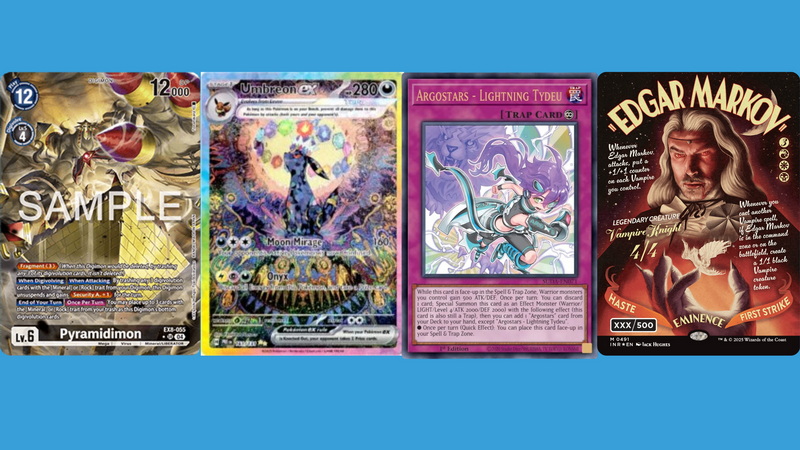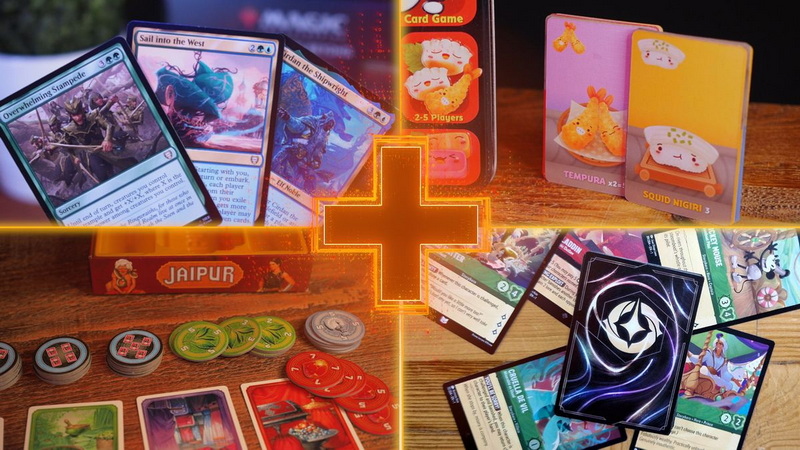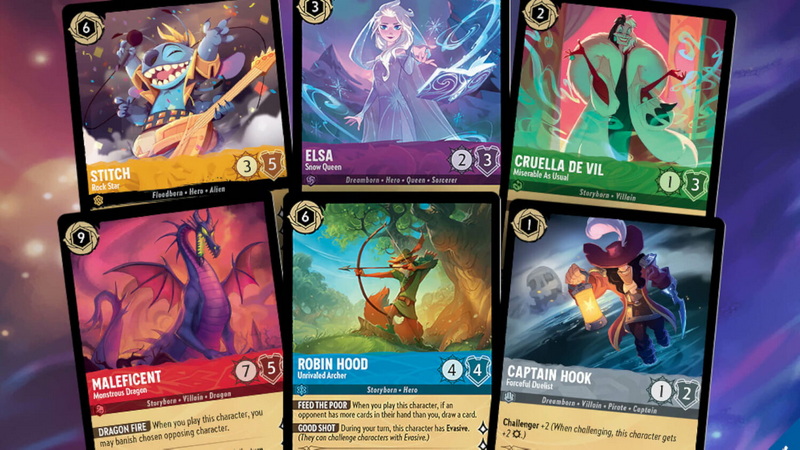Content Menu
● A Brief History of Trading Card Games
● Key Factors Influencing Popularity
● Top Contenders for the Most Popular TCG
>> Magic: The Gathering
>> Pokémon Trading Card Game
>> Yu-Gi-Oh! Trading Card Game
>> Hearthstone
>> Other Notable TCGs
● The Rise of Digital TCGs
● Emerging Trends and Future Directions
● Conclusion
● Frequently Asked Questions
>> 1. What was the first trading card game?
>> 2. What factors contribute to a TCG's popularity?
>> 3. Are digital TCGs becoming more popular than physical TCGs?
>> 4. What are some emerging trends in the TCG genre?
>> 5. What makes Magic: The Gathering so enduring?
● Citations:
The world of trading card games (TCGs) is vast and diverse, encompassing a wide array of themes, mechanics, and communities. From humble beginnings rooted in baseball cards to the complex and strategic gameplay of modern TCGs, the genre has evolved into a global phenomenon, captivating millions of players of all ages[2][8]. Determining the "most popular" TCG is not a straightforward task, as popularity can be measured in various ways, including sales figures, player base size, tournament attendance, and online presence[3][6]. Nevertheless, by examining the historical context, key players, and current trends, we can gain a comprehensive understanding of the TCG landscape and identify the leading contenders for the title of most popular trading card game.

A Brief History of Trading Card Games
The origins of TCGs can be traced back to the early 1900s with "The Baseball Card Game," created by The Allegheny Card Company[2]. This game simulated baseball using cards but lacked the defining characteristics of modern TCGs, such as collectible cards sold randomly in packs and strategic deck building[2][5].
The first true modern TCG emerged in 1993 when Wizards of the Coast launched Magic: The Gathering (MTG)[2][8]. Designed by Richard Garfield, Magic: The Gathering introduced the revolutionary concept of collectible cards sold randomly in packs, allowing players to construct customized decks and engage in strategic gameplay[2]. The game also pioneered the concept of card rarity, with some cards being more difficult to obtain than others[2][8]. Magic: The Gathering's success was unprecedented, blending strategy, skill, and luck to captivate players worldwide and paving the way for other TCGs[2].
Following Magic: The Gathering's breakthrough, numerous other TCGs emerged, each with its unique themes and mechanics. Pokémon, introduced in 1996, quickly gained global popularity, appealing to both children and adults with its recognizable characters, simple rules, and addictive gameplay[2][3]. Yu-Gi-Oh!, a Japanese card game that debuted in 1999, also achieved widespread success, blending strategic card play with elements of roleplaying and storytelling[2][3]. Other early TCGs included the Digimon Trading Card Game and the World of Warcraft TCG[2].
The TCG genre has continued to evolve, adapting to the digital age with online versions of games and exploring new technologies such as augmented reality and virtual reality[2]. Today, the TCG landscape is diverse and dynamic, with numerous games vying for players' attention and loyalty[3].
Key Factors Influencing Popularity
Several factors contribute to the popularity of a TCG, including:
- Gameplay Mechanics: Engaging and strategic gameplay is essential for attracting and retaining players[3]. A well-designed TCG should offer a balance of skill, luck, and deck-building strategy.
- Theme and Aesthetics: A compelling theme and visually appealing card designs can significantly enhance a TCG's popularity[3]. Games based on popular franchises, such as Pokémon and Yu-Gi-Oh!, often benefit from established fan bases.
- Collectibility: The thrill of collecting rare and powerful cards is a major draw for many TCG players[8]. A well-designed rarity system can create a sense of excitement and drive demand for specific cards.
- Community: A strong and active community is vital for a TCG's long-term success[8]. Organized play events, online forums, and social media groups provide opportunities for players to connect, share strategies, and build relationships.
- Accessibility: A TCG that is easy to learn and play is more likely to attract new players[1]. Clear rules, tutorial materials, and introductory products can help lower the barrier to entry.
- Support and Marketing: Consistent support from the game's publisher, including regular expansions, organized play programs, and marketing campaigns, is crucial for maintaining a TCG's popularity[1].
- Digital Integration: The availability of digital versions and online play enhances accessibility and allows players to engage with the game anytime, anywhere[2].
Top Contenders for the Most Popular TCG
Based on the factors discussed above, several TCGs stand out as leading contenders for the title of most popular:
Magic: The Gathering
As the original modern TCG, Magic: The Gathering has maintained its position as a dominant force in the industry[3][8]. With its complex and strategic gameplay, vast card pool, and dedicated player base, Magic: The Gathering continues to attract both veteran and new players[3]. The game's regular expansions and organized play programs keep the community engaged and ensure its long-term viability[1][8]. Magic: The Gathering Arena is one of the best digital versions of Magic to date[1].
Pokémon Trading Card Game
The Pokémon Trading Card Game leverages the immense popularity of the Pokémon franchise to attract a broad audience, including children, collectors, and competitive players[2][3]. Its simple yet engaging mechanics, nostalgic appeal, and vibrant card designs have made it one of the most successful TCGs of all time[2][3]. The game's continuous support through new expansions, video games, and merchandise ensures its continued popularity.
Yu-Gi-Oh! Trading Card Game
Yu-Gi-Oh! has cultivated a dedicated following with its unique blend of strategic card play, roleplaying elements, and anime-inspired aesthetics[2][3]. The game's fast-paced gameplay and emphasis on summoning powerful monsters have made it a favorite among competitive players[2]. Yu-Gi-Oh! 's strong presence in both physical and digital formats contributes to its continued popularity.
Hearthstone
While technically a digital collectible card game (DCCG), Hearthstone has significantly impacted the TCG landscape[1]. Developed by Blizzard Entertainment, Hearthstone offers accessible gameplay, charming art style, and a thriving online community[1]. Its free-to-play model and regular content updates have made it one of the most popular digital card games in the world, introducing many players to the TCG genre. Hearthstone's Battlegrounds mode turns the card game into a refreshingly addictive auto-battler[1].
Other Notable TCGs
In addition to the top contenders, several other TCGs have garnered significant popularity and deserve recognition:
- Cardfight Vanguard: A Japanese TCG known for its unique "Ride" mechanic and emphasis on character interactions.
- Final Fantasy TCG: Based on the popular video game franchise, featuring iconic characters and strategic gameplay.
- Dragon Ball Super Card Game: Drawing from the Dragon Ball anime series, offering fast-paced battles and powerful characters.
- One Piece TCG: Based on the popular One Piece manga and anime series[4].

The Rise of Digital TCGs
The advent of digital technology has profoundly impacted the TCG landscape, giving rise to digital collectible card games (DCCGs) and online platforms for playing traditional TCGs[2]. DCCGs offer several advantages, including accessibility, convenience, and lower costs compared to physical TCGs[2]. Digital platforms also enable players to connect and compete with others worldwide, fostering a sense of community and expanding the reach of TCGs[2].
Hearthstone is a prime example of a successful DCCG, demonstrating the potential for digital card games to attract a large and engaged audience[1]. Other popular DCCGs include Magic: The Gathering Arena, Gwent: The Witcher Card Game, and The Elder Scrolls: Legends[1]. Many traditional TCGs, such as Magic: The Gathering and Yu-Gi-Oh!, have also embraced digital platforms, offering online versions of their games to cater to a wider audience[1][2].
The increasing popularity of digital TCGs raises questions about the future of the genre. While physical TCGs offer a tactile experience and a sense of collectibility that digital games cannot replicate, digital TCGs provide convenience, accessibility, and innovative gameplay mechanics[2]. It is likely that both physical and digital TCGs will continue to coexist and evolve, catering to different player preferences and shaping the future of the genre.
Emerging Trends and Future Directions
The TCG landscape is constantly evolving, with new games, mechanics, and technologies emerging to capture players' attention. Some notable trends and future directions in the TCG genre include:
- Hybrid TCGs: Games that combine elements of physical and digital TCGs, such as using mobile apps to enhance gameplay or integrating physical cards with online platforms.
- Augmented Reality (AR) and Virtual Reality (VR): Exploring the use of AR and VR technologies to create immersive and interactive TCG experiences[2].
- Blockchain Technology: Utilizing blockchain technology to create secure and transparent digital card ownership, enabling players to trade and sell their cards with confidence.
- Indie TCGs: The rise of independent game developers creating unique and innovative TCGs with niche themes and mechanics.
- Esports and Competitive Gaming: The increasing popularity of TCGs as esports, with organized tournaments and professional players competing for prizes and recognition.
These trends suggest that the TCG genre will continue to evolve and adapt to new technologies and player preferences. The future of TCGs is likely to be characterized by greater integration of physical and digital elements, increased accessibility, and a wider range of diverse and innovative games.
Conclusion
Determining the "most popular" trading card game is a complex and multifaceted question. While sales figures and player base size offer some insight, other factors such as community engagement, critical acclaim, and cultural impact also play a significant role. Magic: The Gathering, Pokémon Trading Card Game, and Yu-Gi-Oh! have consistently been at the top[3]. Hearthstone has also had a major impact on the TCG landscape[1].
Ultimately, the "most popular" TCG is subjective and depends on individual preferences. However, by examining the historical context, key players, and current trends in the TCG genre, we can gain a deeper appreciation for the diverse and engaging world of trading card games.

Frequently Asked Questions
1. What was the first trading card game?
The first trading card game was "The Baseball Card Game", created by The Allegheny Card Company in the early 1900s[2]. However, the first modern TCG was Magic: The Gathering, launched in 1993 by Wizards of the Coast[2].
2. What factors contribute to a TCG's popularity?
Gameplay mechanics, theme, collectibility, community, accessibility, support, and digital integration all contribute to a TCG's popularity[1][3][8].
3. Are digital TCGs becoming more popular than physical TCGs?
Digital TCGs are gaining popularity due to their accessibility and convenience[2]. However, physical TCGs still offer a unique tactile experience and a sense of collectibility that digital games cannot replicate. Both formats are likely to coexist and cater to different player preferences.
4. What are some emerging trends in the TCG genre?
Emerging trends include hybrid TCGs, AR/VR integration, blockchain technology, indie TCGs, and the growth of TCG esports.
5. What makes Magic: The Gathering so enduring?
Magic: The Gathering's complex gameplay, vast card pool, regular expansions, and strong community all contribute to its enduring popularity[3][8].
Citations:
[1] https://www.pcgamesn.com/best-pc-card-games
[2] https://www.bigorbitcards.co.uk/blog/a-brief-history-of-trading-card-games.html
[3] https://boostercrate.com/blogs/news/top-11-trading-card-games
[4] https://www.youtube.com/watch?v=yk5yZqRDRCw
[5] https://en.wikipedia.org/wiki/Collectible_card_game
[6] https://joyful-games.com/blogs/card-and-board-games-101/the-most-popular-card-games-modern-and-classic-2023-2024
[7] https://www.reddit.com/r/TCG/comments/1hn2k6e/new_tcgs_in_2025/
[8] https://thebattlestandard.com/the-first-trading-card-game-to-today-a-brief-history/
































